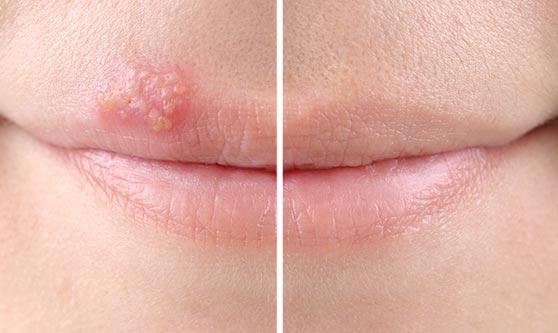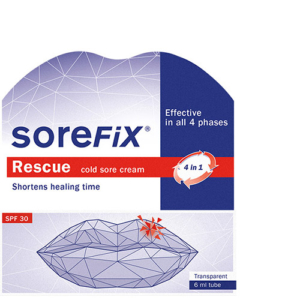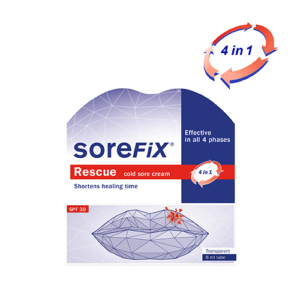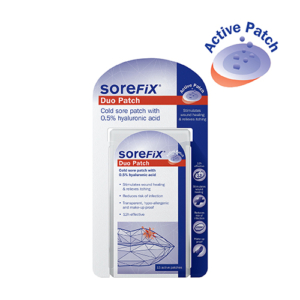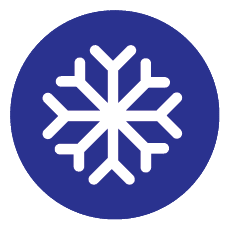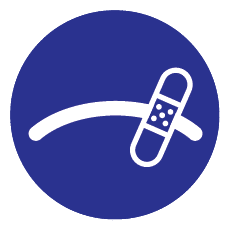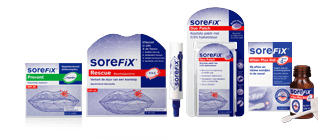The symptoms of a cold sore can be very annoying. You can often divide the period of the cold sore into different phases. It often starts with a tingling in the lip. You feel itching, pain or a burning sensation. Subsequently, the affected skin becomes red (erythema) and small, round pimples (papules) develop. Finally, the cold sore progresses to the formation of blisters, which can burst open. The cold sore is surrounded by red and inflamed skin.
The 4 phases of a cold sore
There are 4 stages in a cold sore life cycle. The Herpes Simplex Virus is contagious at every stage. The duration of all phases together is about 7 to 10 days, but sometimes 2 weeks or longer. Consult a doctor if a cold sore lasts longer than 14 days.
Phase 1 (day 1-2) The tingling phase
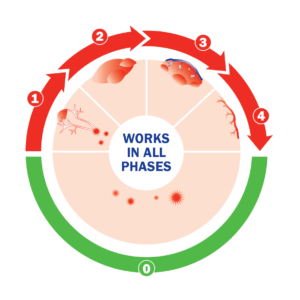
The first symptoms often include tingling, pain, itching, or a burning sensation, which can last for several hours. The affected skin becomes red (erythema), and small, round pimples (papules) develop. During this phase, the infection is contagious, so it’s important to avoid physical contact.
Phase 2 (day 2-4) The blister phase
A group of fluid-filled blisters forms, surrounded by a red inflamed base. These blisters contain viruses and fluid. The body’s defense system begins to fight the infection.
Phase 3 (day 4-5) The ulcer phase
The blisters may burst, causing some fluid to leak out. The cold sore is surrounded by inflamed skin, appearing red and swollen. This stage is the most contagious.
Phase 4 (> 5 days) The healing phase
The sore dries up, forming a scab, which gradually decreases in size. Painful cracks may develop, possibly leading to bleeding, along with itching and/or a burning sensation. The pain diminishes, and the spread of the virus lessens. Eventually, the cold sore heals, and the scab falls off, revealing pink, dry, and scaly skin underneath. Sometimes, the skin remains slightly swollen.

